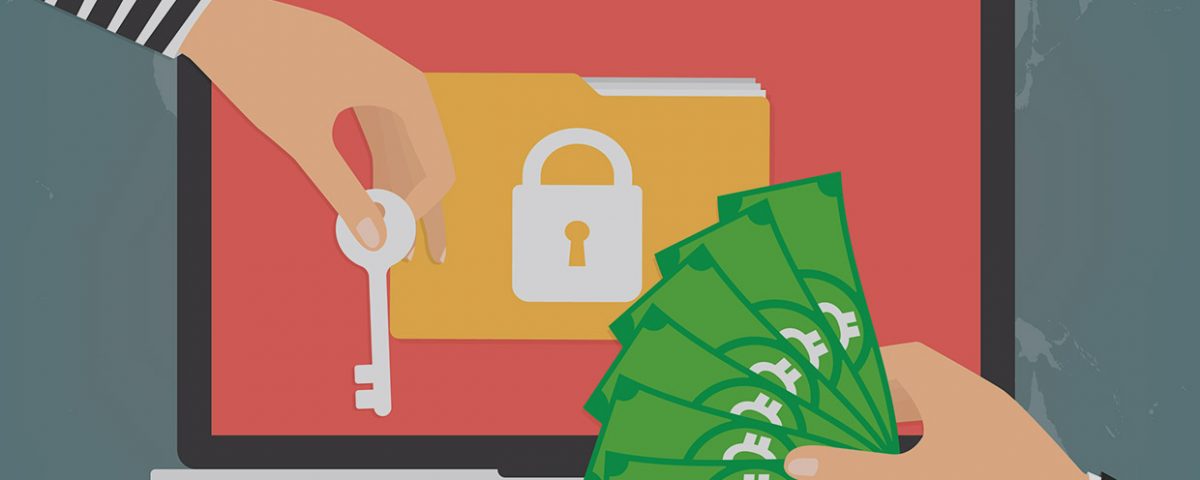
Director’s Corner
April 20, 2017
Seven Compensable Disabilities Face Elimination
April 20, 2017Protecting Yourself From Cyber Crime in the Digital Age
Imagine discovering this message on your mobile device:
“You need to pay for us, otherwise we will sell portion of your personal information on black market every 30 minutes. WE GIVE 100% GUARANTEE THAT ALL FILES WILL RESTORE AFTER WE RECEIVE PAYMENT. WE WILL UNLOCK THE MOBILE DEVICE AND DELETE ALL YOUR DATA FROM OUR SERVER! TURNING OFF YOUR PHONE IS MEANINGLESS, ALL YOUR DATA IS ALREADY STORED ON OUR SERVERS!…”
That’s exactly what happened earlier this year to one victim who downloaded a Google Play store app embedded with ransomware, a common form of malicious software that encrypts data on a computer or mobile device and blocks users from accessing their files – sometimes even threatening to leak them on the Internet – until they pay up. In this particular instance, cybersecurity firm Check Point Software Technologies was able to quarantine the device before it infected a larger network, but not everyone is so lucky.
As the world becomes more connected, cybersecurity risks are growing in lockstep. Ransomware has become a favorite tool of cyber criminals, with ransom demands ranging from hundreds to thousands of dollars per attack. Fortune Magazine recently reported that U.S. victims – from everyday Internet users to large corporations – lost nearly $2.9 million last year, up from $1.6 million in 2015. That number is only expected to grow.
Ransomware is just one of the many cybersecurity threats we face as a result of increasing dependence on interconnected technology. Computing solutions firm Intel Corp. predicts there will be more than 200 billion “smart” objects globally by 2020, and the proliferation of these objects means that nearly anything and everything is either digitally connected or capable of being so. While these technologies are designed to add convenience to our lives, they also can leave us vulnerable to data breaches and serious financial consequences.
Improve Your Security
Two hundred billion connected devices means 200 billion potential points of entry for cyber criminals, and the threat of hacking extends beyond desktop computers and mobile devices to vehicles, home alarms, pacemakers, power grids, traffic systems and many, many others. There are a variety of ways you can reduce your own vulnerabilities, and it starts with understanding what those vulnerabilities are. Researching ways in which data can be stolen and used is the first step in understanding how to lower your risks.
Steps you can take in order to avoid having your private information compromised include:
- Randomize passwords for different accounts and keep track of them using a password manager such as LastPass, 1Password or Apple’s iCloud Keychain;
- Take advantage of the ability to use multiple forms and layers of user authentication on digital devices;
- Use non-default passwords on routers, home security systems, smart TVs and other devices capable of connecting to the Internet;
- Don’t open emails and other files from unfamiliar sources;
- Protect yourself from encryption-based attacks like ransomware by backing up critical data on a hard drive that isn’t left connected to the computer you’re backing up;
- Conduct regular scans with antivirus and anti-malware technology;
- Patching operating systems, software and firmware on digital devices;
- Stay on top of the latest security updates through social media platforms;
- Avoid oversharing personal information on social media; and
- Download secure apps only from official app stores.
It’s never too late to take steps to improve your personal cybersecurity, and doing so could protect you from untold financial losses. If you suspect you’ve been a victim of cyber crime, file a complaint with the Federal Bureau of Investigation’s Internet Crime Complaint Center (IC3) at www.ic3.gov.



